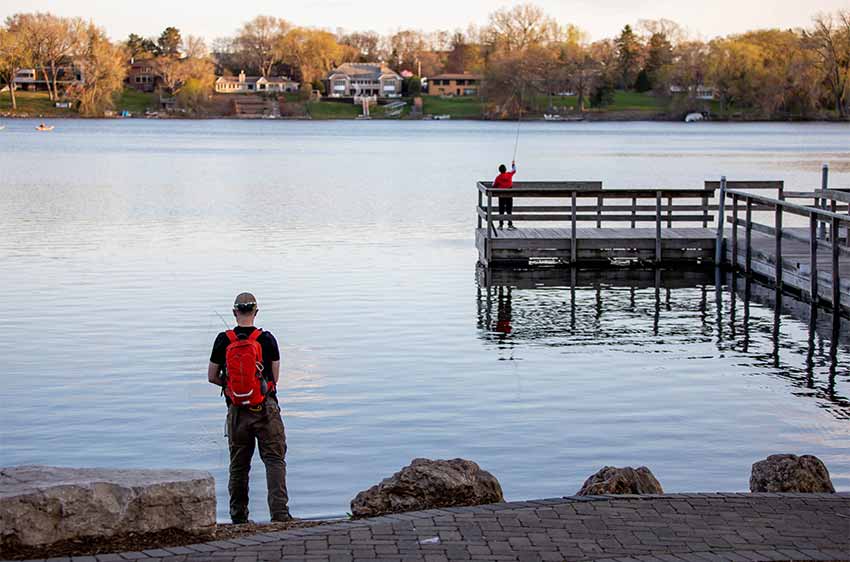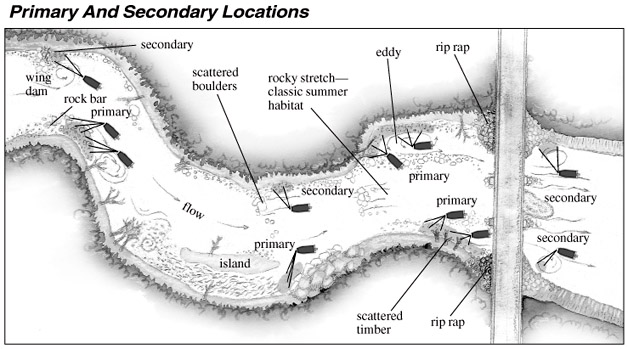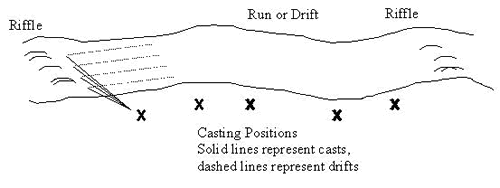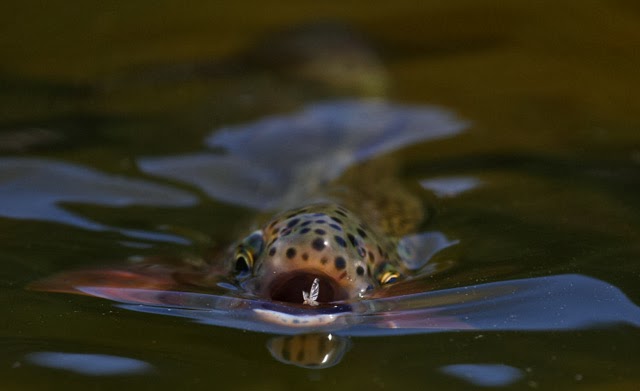How to Fish in a River From Shore
Fishing from shore is difficult in any body of water, but especially when it comes to fishing rivers. Rivers often have steep banks, low accessibility, and obviously running water which is much harder to fish than still water.
Choosing the Riverbank to Fish
Figuring out where to fish is decided by two main factors. These are reading the river and identifying water access.
You need to be able to read the river in order find areas where fish actually are.
And you need to have a lot of access to open banks that aren’t blocked by trees, bushes, or steep ledges so that you can actually get you bait in the water.
Reading a River from the Shore
Successful riverbank fishing requires reading the river from the shore. Key factors to consider include observing water flow and currents, identifying underwater structures, and noting water clarity.
Eddies, shade, and cover are essential elements to spot, as are signs of wildlife activity. Look for current brakes caused by underwater boulders.
If you are having a hard time identifying good areas to fish, consider using a portable, castable fish finder to find the depth, underwater structure, and locate the fish themselves.
Finding Accessible Riverbanks
This part can sometimes take a bit of walking. River shorelines are often very steep because of the huge change in water level between spring, summer, fall, and winter.
This makes a lot of the bank either unfishable or too dangerous to get to. Most of of the shoreline will also be covered in very dense trees and shrubs limiting your fishing access to the water.
But, every river also has large portions that have full water accessibility and are not dangerous to get to, and this is where bank fisherman can catch river fish.
Go To River Locations
- Below Rapids: Bass and other predatory fish wait at the bottom of the rapids to eat bait fish and other creatures that are discombobulated my the rapids.
- Deep Pools: These can be hard to identify, but the are one of the best places to catch fish, especially because there is less current, so you can keep your lure where you want it for longer.
- Points: Points create bottom structure and a change in the flow of the water. Fish hold to both big and small points on the river.
- Bends: Sharp river bends create depth and current changes.
- Grass: Even rivers have lots of grass. Grass lines and islands are great places to target from the bank.
How to Cast from the Bank
If you are fishing a still section of the river, than casting techniques will be the same as bank fishing in a pond.
Fan casting and covering as much water as you can is your best bet. However, if the water is moving, than you should be a bit more selective with where you cast.
Prioritize your casts on high percentage areas like the ones we previously discussed.
The harsh river conditions force fish to hold to areas where they are safe and have access to food.
Also cast up stream on the river because the current will carry your lure downstream as you retrieve it.
Best Lures when River Fishing from Shore
When fishing in rivers from the shore, choosing the right lures is crucial to enticing fish and increasing your chances of a successful catch. Here are some of the best lures to consider:
- Spinnerbaits: Spinnerbaits are versatile lures that work well in various water conditions. They create vibration and flash, attracting predatory fish like bass and pike. You can vary the retrieve speed to mimic injured baitfish.
- Crankbaits: Crankbaits are effective for covering different water depths. They come in various shapes and sizes, allowing you to target specific fish species. Retrieve them with a steady crank or vary the speed to trigger strikes.
- Soft Plastic Worms: Soft plastic worms, rigged on a weedless hook or jighead, are go-to lures for riverbank anglers. Tube baits are especially popular smallmouth lures when fishing rivers.
- Topwater Lures: Topwater lures like poppers and frogs create surface commotion that can trigger explosive strikes, especially during dawn and dusk.
- Inline Spinners: Inline spinners are known for their simplicity and effectiveness. They mimic small fish or insects and are particularly productive for trout, panfish, and smallmouth bass.
- Crayfish Imitations: Crayfish are a staple in many river ecosystems. Lures that imitate crayfish, such as plastic crayfish imitations or jigs with crayfish patterns, can be highly effective for various species.
- Natural Baits: Don’t overlook the power of natural baits like nightcrawlers, minnows, and leeches. Depending on local regulations and preferences, these live baits can be some of the most effective choices.
- Scented Soft Baits: Scented soft baits can be especially effective in rivers, where fish rely on their senses to locate prey. Baits infused with scents like garlic, shrimp, or anise can increase your chances of attracting fish. The scrounger head is my favorite way to rig them up.
Be Prepared for Anything
Rivers are very diverse water systems. There are all kinds of depths, currents, forage, structure, and other variables that all change how you should be fishing the river.
Use a fishing backpack to bring as much gear and lures as possible so that you can match the river conditions perfectly.
Also bring 2-3 rods for the same reason. At minimum you should have one spinning rod and one baitcasting rod.
Consider Fly Fishing
Fly fishing is very popular for smaller and shallower rivers or streams. Fly fishing is most popular for trout fishing but is very effective for all species of fish.
Fly fishing can be very peaceful and therapeutic and many fly fisherman choose to wade into the river to get the most out of the experience.
Wading
Wading only works in shallow rivers and streams, but allows you to go straight to the fish and cover much more water.
Just make sure the water is not too deep or too strong so that you can remain safe not swept down the river.
I also love wading because it feels amazing and really connects you to nature.
Also read: Smallmouth vs Largemouth Bass
Reeling this In
Fishing in a river from shore can be intimidating for anglers. Once you know how to fish from these riverbanks it can be very rewarding and result in lots of big catches.
As with anything, experience is key. Get out there and fish as much as you can. Every trip you will learn more and get better at fishing these flowing shorelines.











